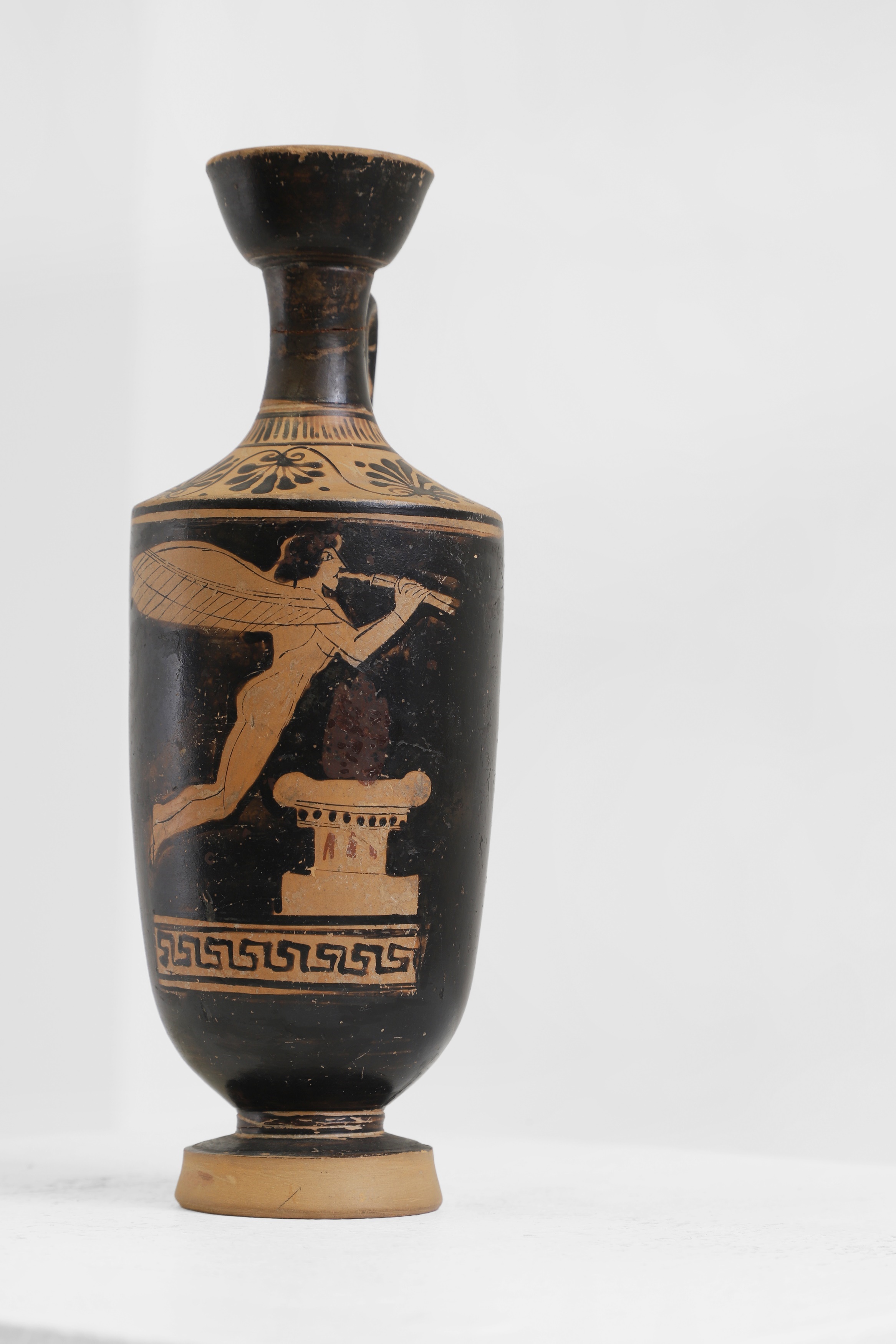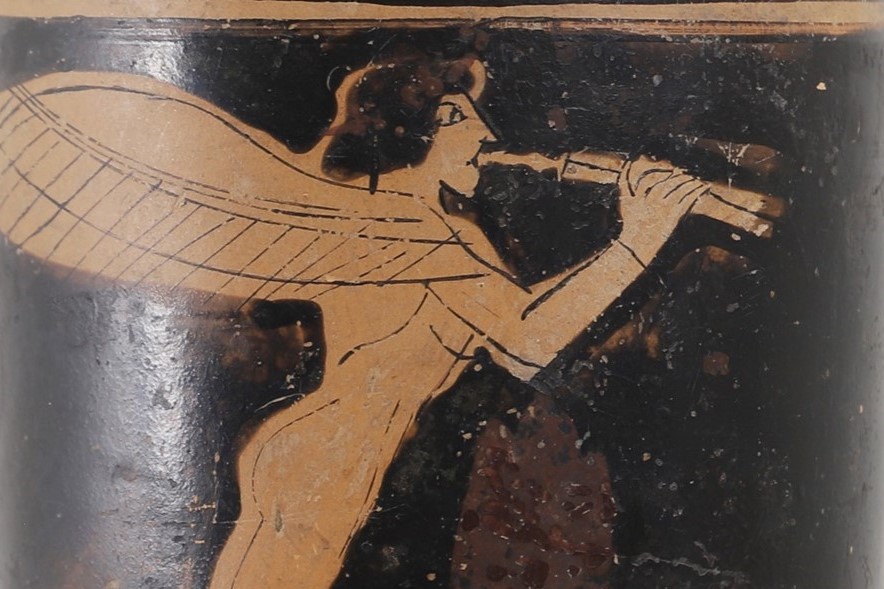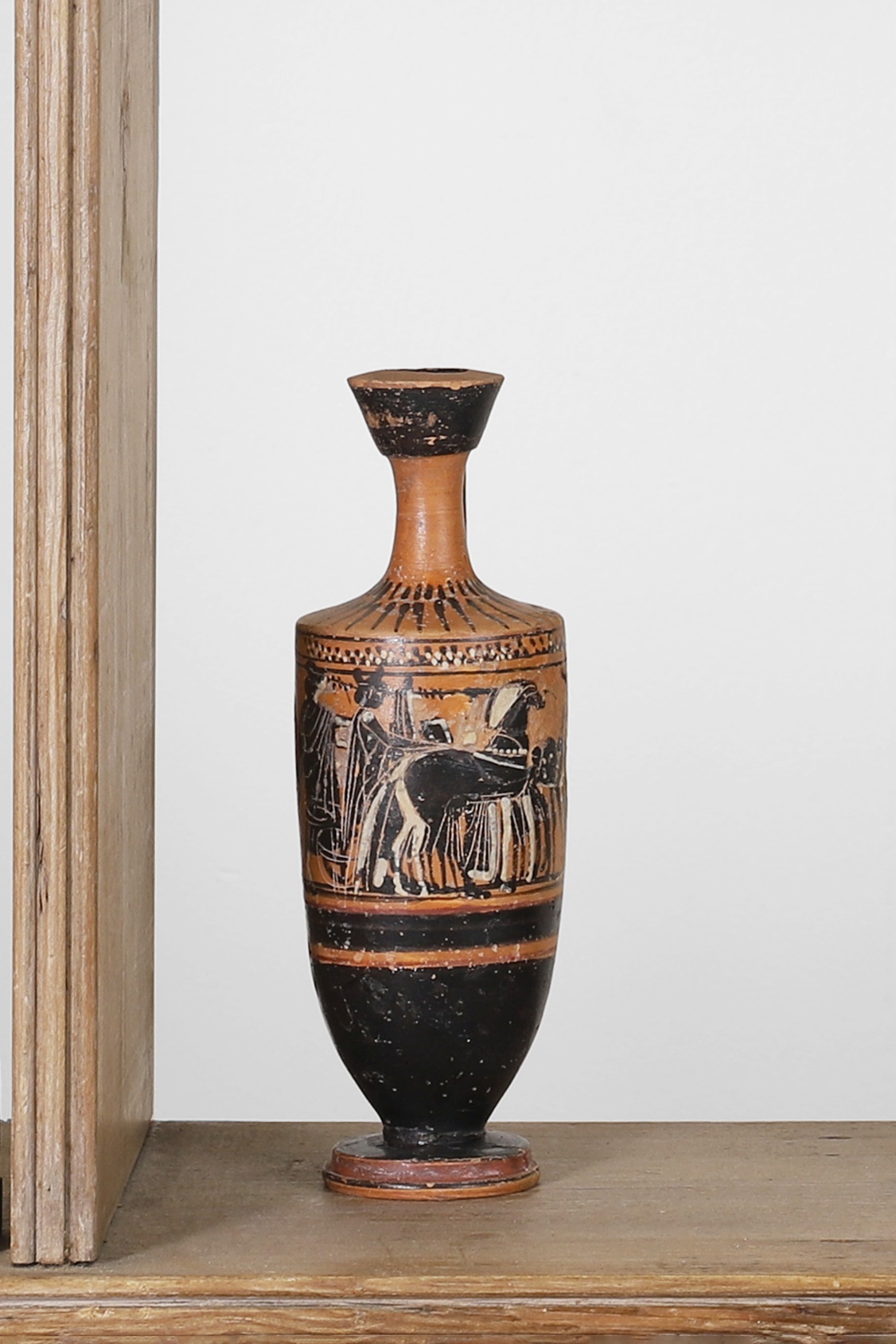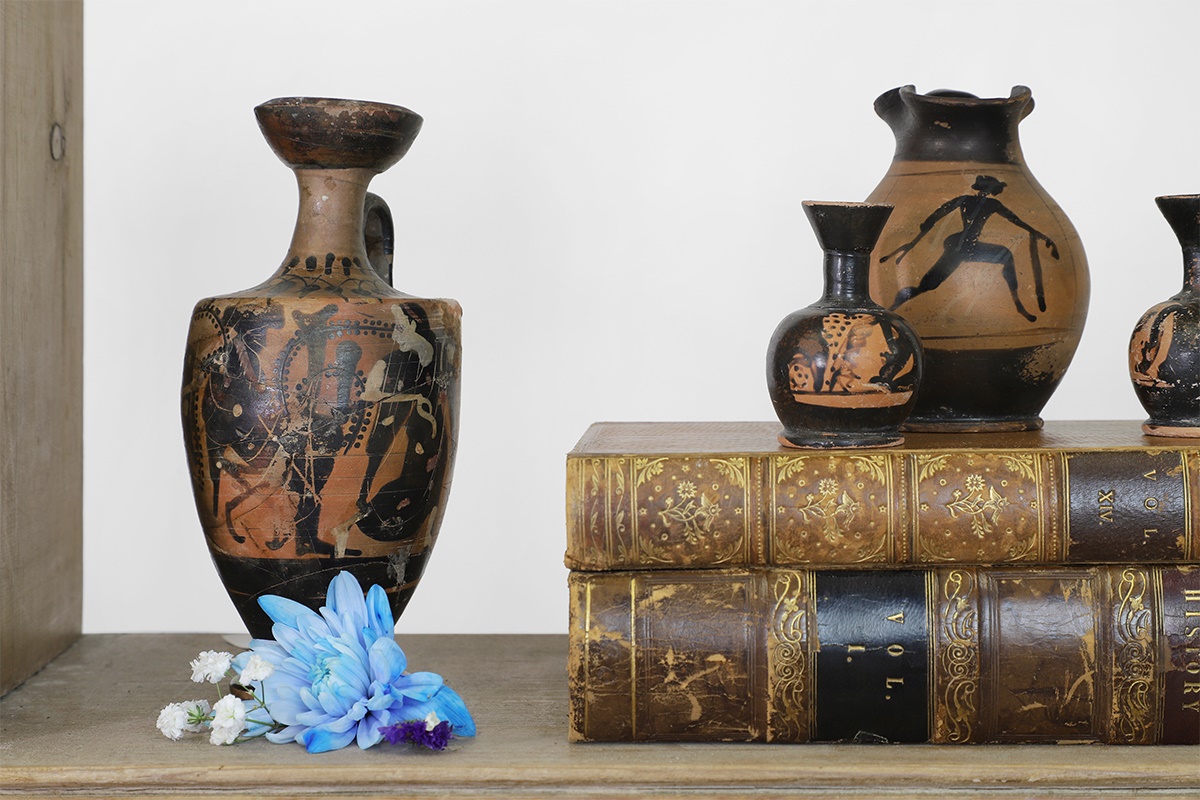

The Fine Interiors department feel privileged to offer for sale a private collection of Antiquities in our 19 & 20 March sale, from the estate of the late Sir Clinton Charles Donald Cory, 5th Baronet of Coryton.
14 March 2024
VIEW AUCTION REQUEST A VALUATION CONTACT A SPECIALIST
Cory was a lifelong aesthete and a collector of objets d’art and antiquities, in particular Attic pottery and numismatics, and revelled in meticulously cataloguing and archiving his collection. The selection of pottery, glass and stone fragments will be sold in twenty-eight lots, with many coming with provenance from leading dealerships and auction houses such as Charles Ede, Sotheby's and Bonhams. Here, our team shines the spotlight on a couple of the fascinating objects coming under the hammer.

An Attic red-figure lekythos, c.5th century BC, Greek, attributed to the Bowdoin Painter (c.475-425 BC), decorated with Eros playing pipes over a funerary altar, with linked palmettes to the shoulder, 6.5cm wide, 19cm high
Provenance: The collection of the late Sir Clinton Charles Donald Cory, 5th Baronet of Coryton;
acquired by the above from Sotheby's, 17 May 1983 lot 248.
The Bowdoin Painter was an Athenian artist, primarily of red-figure lekythoi, working c.470-460 BC. The name of the artist is unknown, but items attributed to or in the manner of are named after a lekythos in Bowdoin College, Maine, United States. The stylistic elements in the present lot that indicate this artist’s hand include the linked palmettes around the shoulders, the large winged figure to the body with simplistic line shading and details, the face with pointed, up-turned nose and large, rounded chin, and the Greek-key banner underneath the figure.

Subject matter in items attributed to the Bowdoin Painter vary, although they include the characteristic central figure to the body. In the present example, the winged figure is playing an aulos (or double flute), an Ancient Greek wind instrument with a sound similar to the oboe or clarinet. It could be played as an accompaniment to singing or as a soloistic performance and it’s very plausible to think they were performed at funerary ceremonies, creating a synergy between the lekythos’ painted design and its intended purpose; lekythoi were elegant ceramic vessels used for storing olive aromatic oil, to be used for anointing corpses, and were often buried as funerary equipment.

An Attic black-figured lekythos in the manner of the Haimon painter, early 5th century BC, Greek, decorated with figures in a chariot and horses, 6.5cm wide, 20cm high
Provenance: The collection of the late Sir Clinton Charles Donald Cory, 5th Baronet of Coryton;
acquired by the above from Phillips, 12 December 1985, lot 61.
The Haimon Painter was an anonymous Athenian black-figure vase artist, named by Sir John Beazley following Emilie Haspels. The latter was the first to assemble the work of this painter, as well as attribute many other black-figured lekythoi produced in Athens between c.560 and 470 BC. to specific painters and workshops, and her 1936 work Attic Black Figured-Lekythoi, has remained the standard on lekythoi since its publication.
As one of the most prolific draughtsmen of the early fifth century, there are more than one hundred pieces attributed to the Haimon Painter that have survived. The name comes from a recurring subject in the pieces: the Spinx (in Greek mythology, Haimon, the son of Creon, was the last victim of the Spinx), however, all the vases are decorated in a casual black-figure style that has a spirited, rhythmic quality. As in the present example, cream slip paint is used for details in some attributed examples, such as for the figure’s faces, clothing, and props.


fineinteriors@sworder.co.uk | 01279 817778
The Kangxi famille verte sweetmeat dishes serve as a remarkable testament to the artistic and cultural legacy of the Qing dynasty. Their intricate designs and auspicious symbols resonate with the values of longevity and prosperity, making them much more than mere tableware.
5 November 2024
Following their impressive 2024 results, Sworders’ Design department aims to continue offering the best quality decorative arts and furniture. Interested in Selling in 2025? Contact the department for a no-obligation valuation and advice on selling with Sworders.
4 November 2024
A Mughal Deccan koftgari 'tabarzin' and an Indian Deccan ceremonial koftgari axe will both be available for bidding and purchase in our 8 November Asian Art sale.
29 October 2024